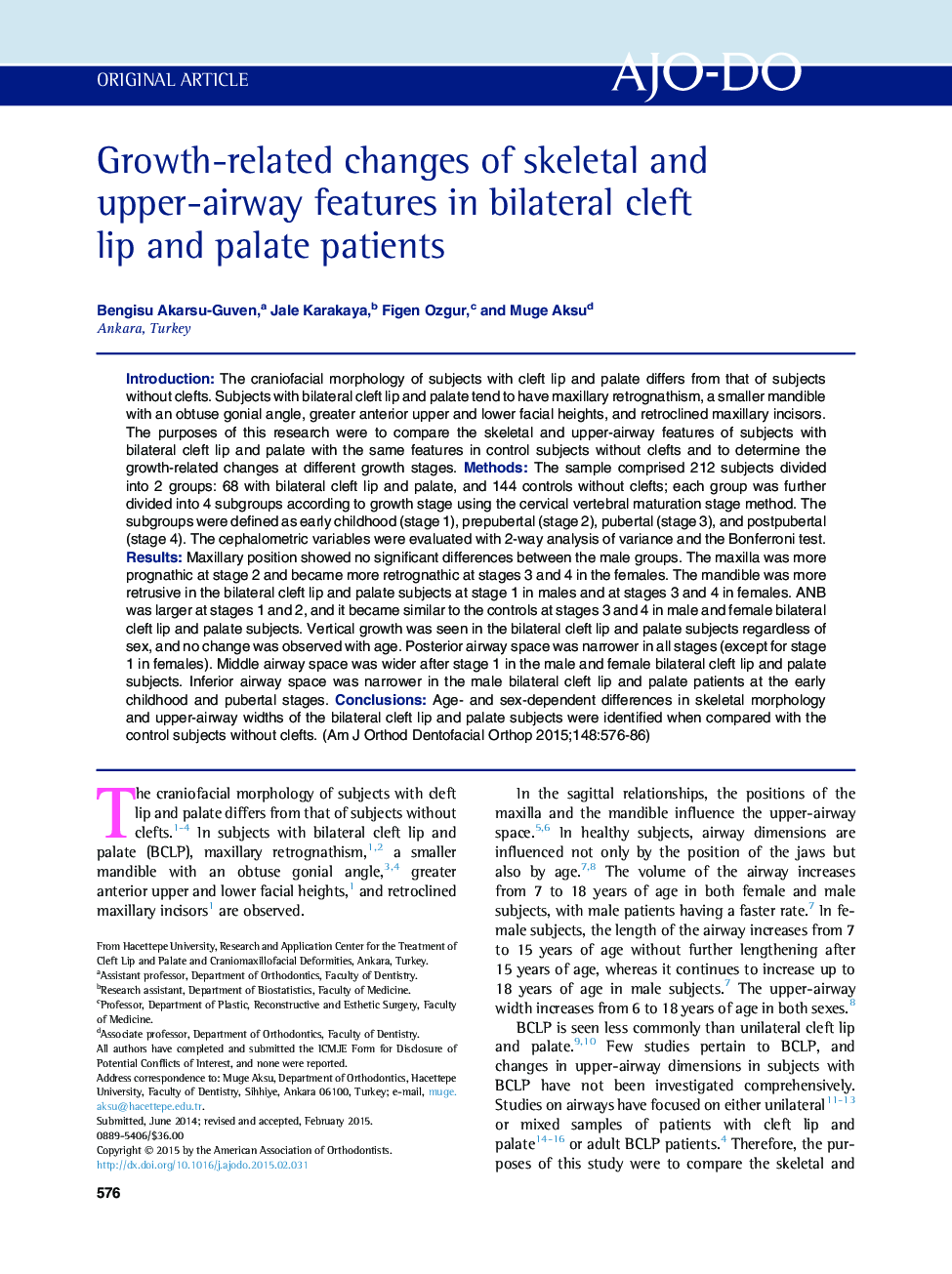| Article ID | Journal | Published Year | Pages | File Type |
|---|---|---|---|---|
| 3115863 | American Journal of Orthodontics and Dentofacial Orthopedics | 2015 | 11 Pages |
•Craniofacial morphology was compared in patients with cleft lip and palate and controls.•Age- and sex-dependent differences were identified.•With age, the maxilla became more retrusive in the cleft subjects.•Bilateral cleft patients had Class II skeletal relationships when young and Class I later.•Vertical growth occurred in cleft subjects, regardless of sex.
IntroductionThe craniofacial morphology of subjects with cleft lip and palate differs from that of subjects without clefts. Subjects with bilateral cleft lip and palate tend to have maxillary retrognathism, a smaller mandible with an obtuse gonial angle, greater anterior upper and lower facial heights, and retroclined maxillary incisors. The purposes of this research were to compare the skeletal and upper-airway features of subjects with bilateral cleft lip and palate with the same features in control subjects without clefts and to determine the growth-related changes at different growth stages.MethodsThe sample comprised 212 subjects divided into 2 groups: 68 with bilateral cleft lip and palate, and 144 controls without clefts; each group was further divided into 4 subgroups according to growth stage using the cervical vertebral maturation stage method. The subgroups were defined as early childhood (stage 1), prepubertal (stage 2), pubertal (stage 3), and postpubertal (stage 4). The cephalometric variables were evaluated with 2-way analysis of variance and the Bonferroni test.ResultsMaxillary position showed no significant differences between the male groups. The maxilla was more prognathic at stage 2 and became more retrognathic at stages 3 and 4 in the females. The mandible was more retrusive in the bilateral cleft lip and palate subjects at stage 1 in males and at stages 3 and 4 in females. ANB was larger at stages 1 and 2, and it became similar to the controls at stages 3 and 4 in male and female bilateral cleft lip and palate subjects. Vertical growth was seen in the bilateral cleft lip and palate subjects regardless of sex, and no change was observed with age. Posterior airway space was narrower in all stages (except for stage 1 in females). Middle airway space was wider after stage 1 in the male and female bilateral cleft lip and palate subjects. Inferior airway space was narrower in the male bilateral cleft lip and palate patients at the early childhood and pubertal stages.ConclusionsAge- and sex-dependent differences in skeletal morphology and upper-airway widths of the bilateral cleft lip and palate subjects were identified when compared with the control subjects without clefts.
